Newly Expanded Makerspace Empowers Innovators Across the University
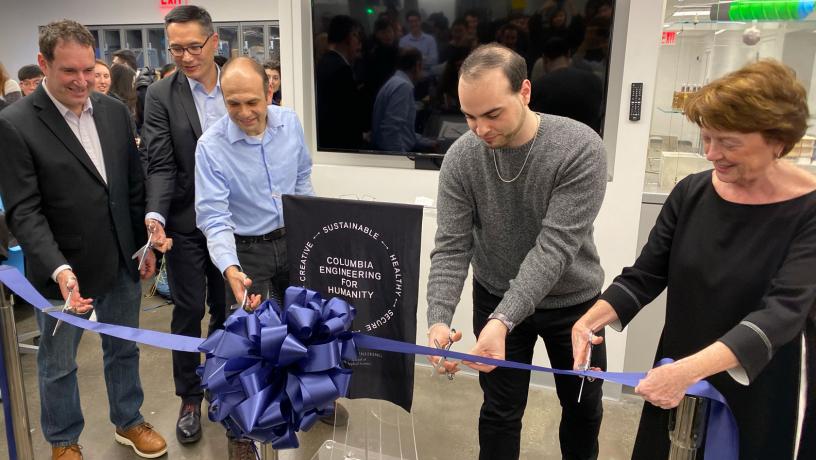
Faculty members Hod Lipson, Sam Sia, and John Kymissis joined Dean Boyce and Makerspace manager Bill Miller for a ceremonial ribbon cutting.
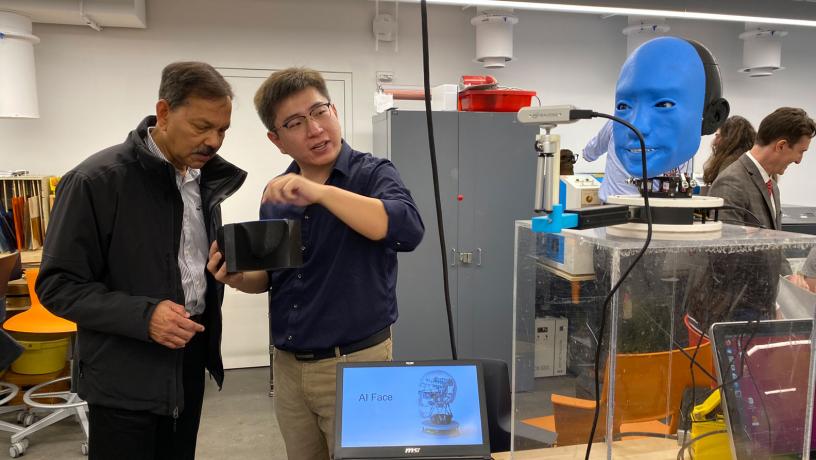
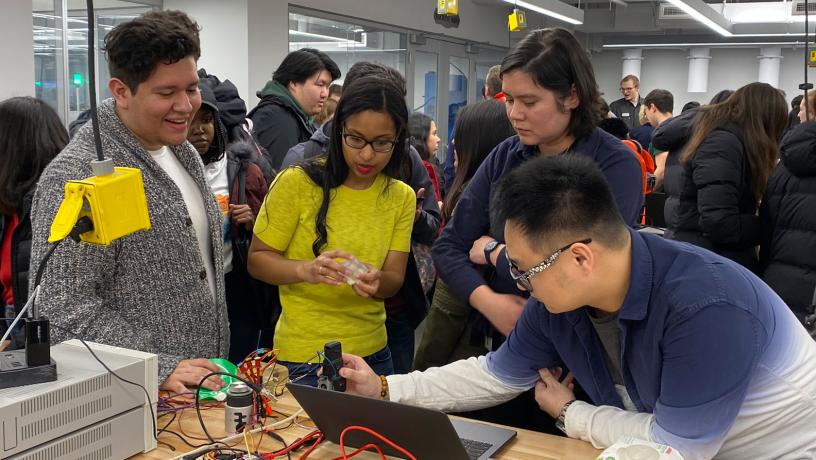
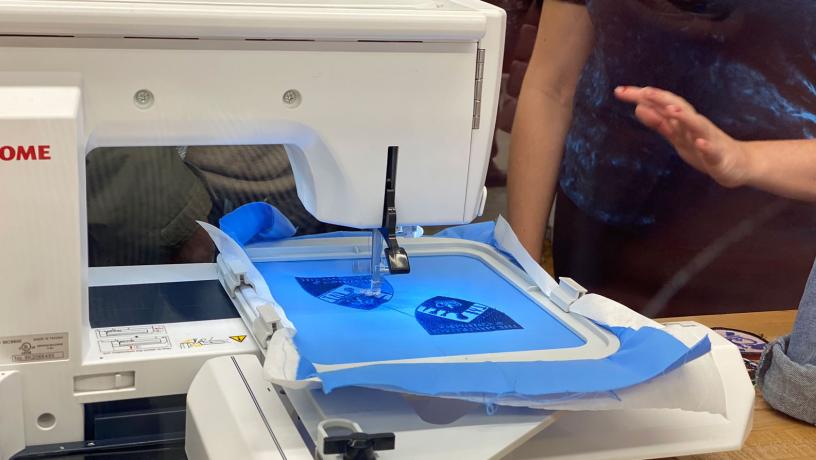
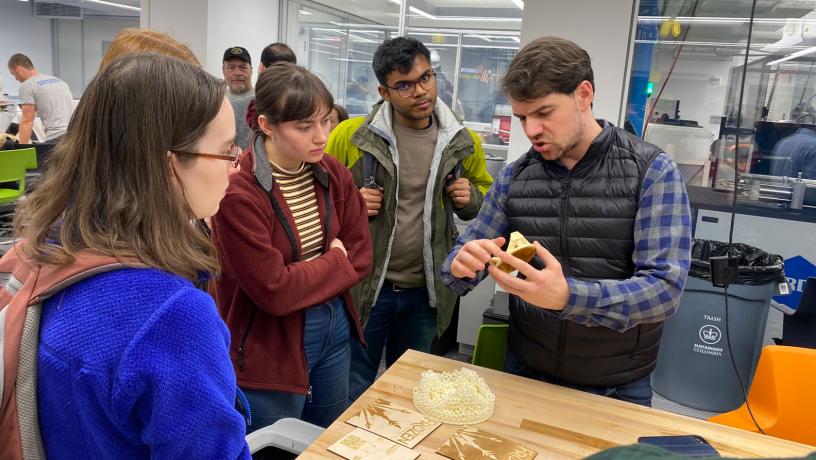
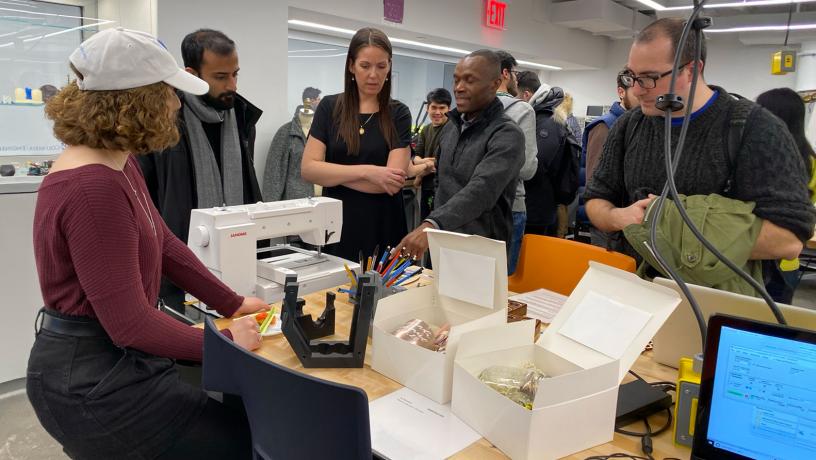
The brand-new, dramatically expanded Columbia Makerspace opened its doors on January 22 to a packed crowd of students, faculty, and alumni. Whether makers’ passions tend toward technical challenges like robotics or rocketry or to pursuits like art, entrepreneurship, or fashion, the extensively equipped 3000-square foot space affords users across the University access to top-notch tools for crafting designs, constructing prototypes, and converting their visions into reality.
“It’s amazing to see, when you walk in here sometimes, people just hanging out and meeting other people who are making things,” said Hod Lipson, the James and Sally Scapa Professor of Innovation and one of the Makerspace’s faculty advisers, to a crowd of students and colleagues assembled at the gleaming new facility for the official ribbon-cutting and an afternoon of demos. “This interaction between people, this is where ideas come in. Even if you don’t know what you’re going to make, just come here and by the time you exit you’ll have 50 ideas and you’ll have a hard time choosing.”
Once newcomers get started, they can rely on peer “super users” on site to get them oriented to the powers at their fingertips, from 3D printers and laser cutters to a vast array of equipment for working with wood, metals, glass, vinyl, and fabrics. From the origins of the initial, smaller space in a student’s suggestion back in 2013, recalled fellow faculty advisor John Kymissis, associate professor and vice chair of electrical engineering, such students’ devotion has made all the difference in establishing and ultimately expanding the Makerspace.
“In the end, all of the hours and work came primarily from the students,” he told the gathering. “They really organized it and brought it forward, and should be really proud.”
The culture of open-ended experimentation has contributed to an ever more interdisciplinary community of makers and doers, attested Sam Sia, professor of biomedical engineering and faculty director of Columbia Engineering Entrepreneurship.
“It’s really about even more than just the equipment, which is so excellent now—it’s also about bringing people together from different programs,” Sia said, outlining chances for Makerspace-involved teams to compete at events like the Columbia Venture Competition and earn Ignition Grants and other support from the university and beyond. “There’s the opportunity for all kinds of students to come together, not just from engineering but from across the university. Even just in the last few years when we had the smaller space we’ve had students from the Business School, the College, General Studies, and from across the whole university working with the engineering students here.”
There’s the opportunity for all kinds of students to come together, not just from engineering but from across the university.
The sheer diversity of projects was showcased among the various demos, ranging from novel material structures made possible by 3D printers to a new open-source diagnostic tool for analyzing ultrasounds in low-resource environments from mechanical engineering PhD candidate Yazmin Feliz. Other mechanical engineers demonstrated robots and woodworking projects made with Makerspace equipment, while members of the Columbia Space Initiative’s rocket group presented their in-the-works hybrid-engine model they hope to launch this June at a national competition in New Mexico. Also on display were custom clothing created using a programmable embroidery machine and 3D-printed jewelry from a small Columbia-based business.
“This is part of our broader innovation, design, and entrepreneurship ecosystem,” Dean Mary C. Boyce said. “We could never have accomplished this kind of a space, with the kinds of facilities and equipment and people to help you really accomplish whatever you want, without the support of our Board of Visitors in helping us make this happen and make it happen for the long run… So whether you are in mechanical engineering, computer science, chemistry, physics, theater, or history, please take advantage!”
